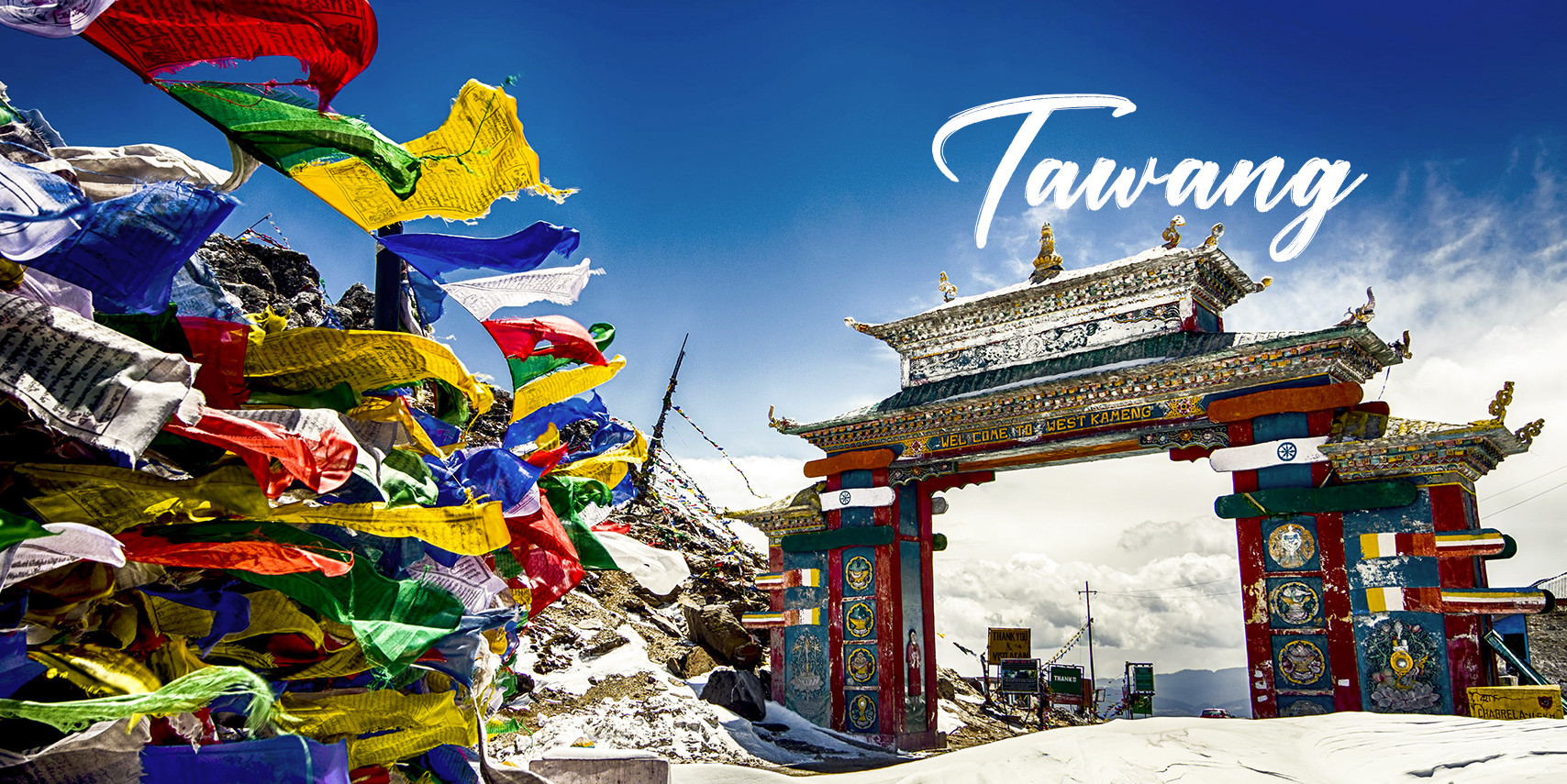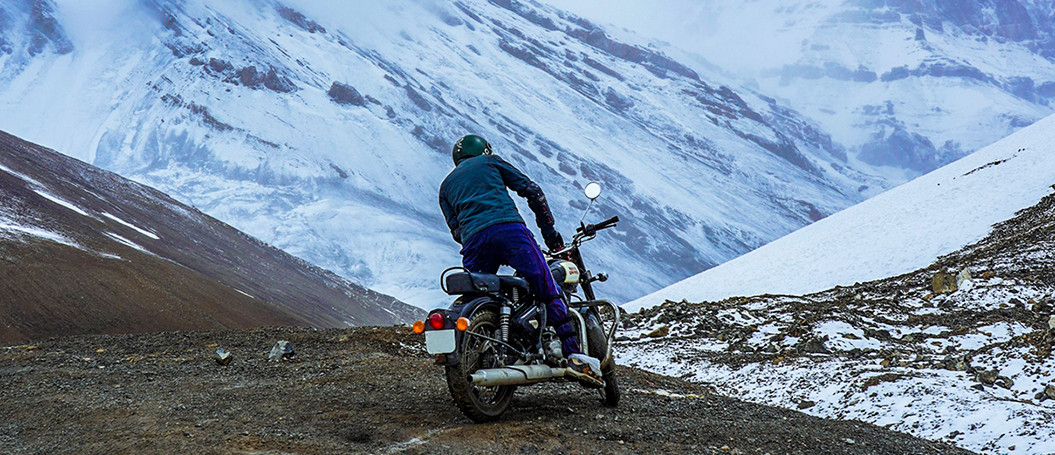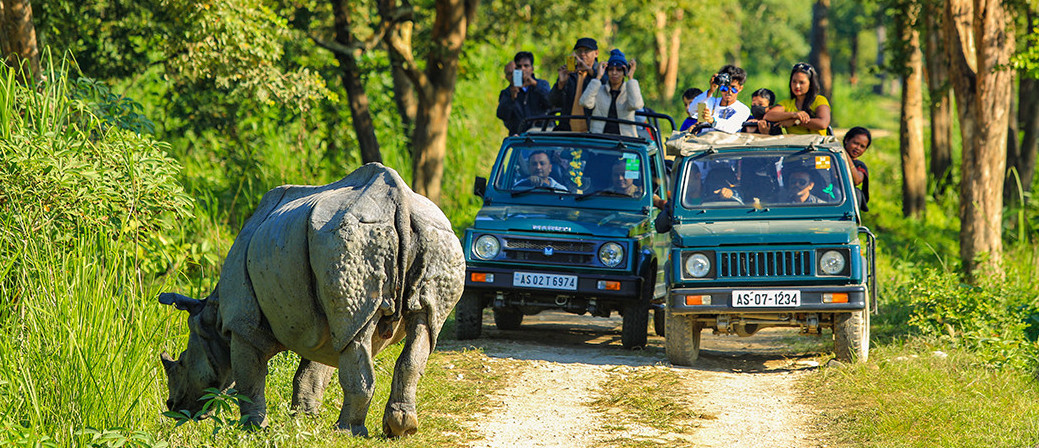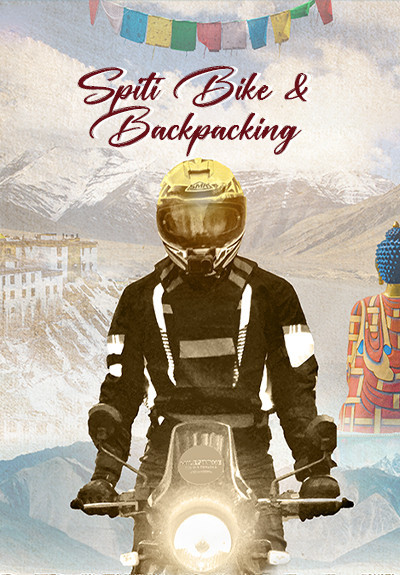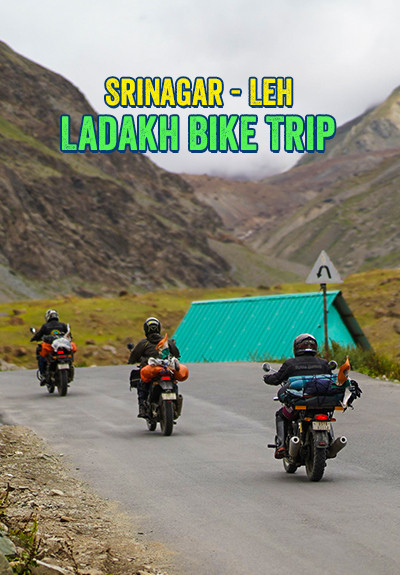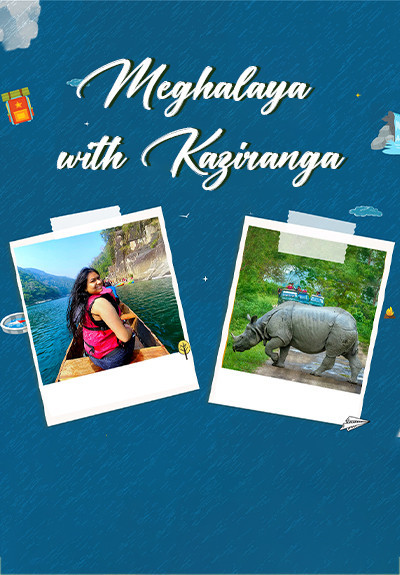
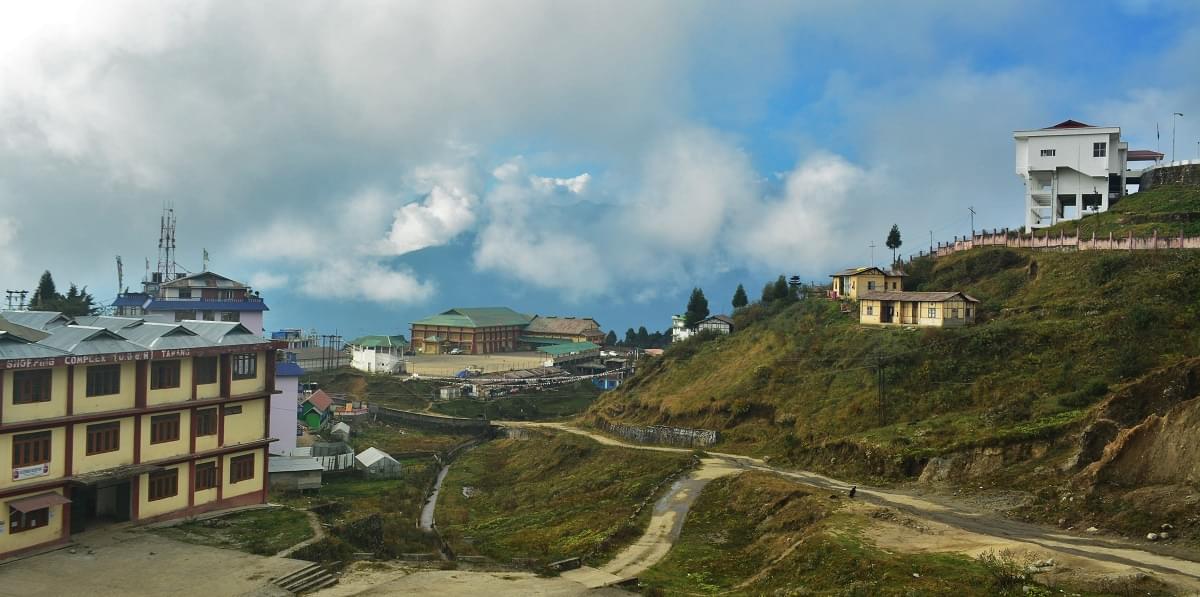



Bike and Backpacking Expedition to Tawang
Details
Inclusions
Safe Travel
Flexible Cancellation
Easy EMI
Certified Captains
24/7 Support
Overview
The Tawang bike expedition is the holy grail for bikers in India, the route being so raw and rugged even visitors from around the world come and have a go at it. It takes a certain level of madness and a thing for adventure to rev a bike and go through this route through the “land of dawn-lit mountains”.
We start our 7-night 8 days Bike expedition to Tawang from Guwahati. Guwahati is known as 'the city of Eastern Light' and it stands on the southern banks of the mighty river Brahmaputra. It is the capital of Assam and the gateway to the entire northeastern states. It is surrounded by hills and the Brahmaputra river, and rich and diverse flora and fauna enhance its natural scenic beauty.
Dirang is a village in Arunachal Pradesh which lies in the West Kameng district. It is situated on the banks of the Jia Bharali river at an altitude of 4900 ft. While in Dirang, you can take a walk through the peaceful village and take in the beautiful and serene environment.
Singstar Tso or the PTSO Lake is one of the highest altitude lakes in India at an altitude of 15,200ft. It is located on the way from Tawang to Bumla Pass. The Bum La Pass is located about 37 km away from Tawang, at the Indo-China border above 16,500 ft above sea level. The roads are mostly covered with snow. The road to Bum La is also a historical route; here in Bum La Pass one of the fiercest battles took place in the 1962 Sino-Indian War.
Next in our bike and backpacking expedition is Tawang, which lies at an elevation of 10,000ft. Tawang has an unmatched natural beauty that will leave you awestruck and of the iconic places to visit in Tawang is Tawang Monastery, which is the largest monastery in India.
Thembang Heritage Village is one of the unique villages which has been identified by UNESCO as a World heritage site village. Here you are going to have an experience of proper traditional Monpa Houses built of stones.
The ideal time to visit Arunachal Pradesh would be during summers i.e. April to June when the valley comes alive with wildflowers and greenery and the weather is pleasant. If you want to experience Arunachal Pradesh during winter, October to February is the best time to experience snow-covered landscapes and mountains.
Gallery





Itinerary
1
Day
Guwahati Arrival | Drive to Kaziranga National Park (191 Kilometers, 4 hours)
2
Day
Kaziranga National Park to Bomdila (240 Kilometers, 6 Hours)
3
Day
Drive from Bomdila to Tawang (176 Kilometers, 5 Hours)
4
Day
Visit Bum La Pass | Drive Back to Tawang
5
Day
Tawang Local Excursion
6
Day
Drive from Tawang to Dirang (134 Kilometers, 4 Hours)
7
Day
Drive from Dirang to Guwahati (300 Kilometers, 8 Hours)
8
Day
Departure from Guwahati
Age Limit (Trip Wise)
Weekend
Getaways
18-38
Himalayan
Treks
18-48
Backpacking
Trips
18-40
Biking
Trips
18-45
Customized
Trips
No Limit
Inclusions & Exclusions
| Inclusions | Exclusions |
Tempo Traveler for local sightseeing Bike Rent with Fuel from Guwahati to Guwahati Riding Gears (Knee guard, Elbow guard, Helmet). Note: Due to comfort and safety reasons, we recommend you all to carry your own helmets for the ride. The helmets which we provide are of standard size so there can be some discrepancies regarding the sizes. Accommodation: 7 Night Hotel Accommodation on sharing basis as per itinerary. Meal Plan: MAPI Basis (Dinner+ Breakfast) The trip Lead will be present at all times during the tour. Group Jungle Safari in Kaziranga Medical and Mechanical Backup Back-up Vehicle Inner line permits Driver Allowances Parking charges First Aid Kits Oximeter Oxygen cylinder | 5% GST Early check-in at the hotel. Any additional expenses of personal nature. Additional accommodation/food costs incurred due to any delayed travel. Cost Of Any Spare Part Which Will Be Used Due To The Accidental Damage Incurred When The Motorbike Is In Rider’s Possession. Cost Incurred To Transfer Or Tow The Motorbike In Case It Is Dropped On The Way. Vehicle Servicing Or Maintenance Cost. Any lunch and other meals not mentioned in Package Inclusions. Any Airfare / Rail fare other than what is mentioned in “Inclusions” or any type of transportation from Guwahati to Guwahati. Additional Costs due to Flight Cancellations, Landslides, Roadblocks, and other natural calamities. A security deposit of Rs. 5,000/- per motorbike. As per the deposit policy, this amount is refundable if there is no damage or spare parts used by the end of the trip. The Amount will be refunded within 5 Working Days. Any other services not specified above in Inclusions. |
Cancellation Policy
| Upto 30 days | 30-21 days | 21-15 days | 14-0 days | |
| Batch Shifting | ||||
| Cancellation Charge | Free Cancellation | 25% Deducted | 50% Deducted | 100% Deducted |
| Booking Amount | Refund in mode of credit (note with lifetime validity) | No Refund | No Refund | No Refund |
| Remaining Amount | Full Refund | Partial Refund | Partial Refund | No Refund |
Payment Policy
| Upto 30 days | 30-21 days | 21-15 days | 14-0 days | |
|---|---|---|---|---|
| Booking Amount | ||||
| 50% Payment | Optional | Compulsory | ||
| 75% Payment | Optional | Optional | Compulsory | |
| 100% Payment | Optional | Optional | Optional | Compulsory |
Things To Pack
Rucksack:
You must pick a good quality backpack with a comfortable fit and straps that won’t give you shoulder pain. You can check out your nearest Decathlon store for a good trekking backpack.
You must pick a good quality backpack with a comfortable fit and straps that won’t give you shoulder pain. You can check out your nearest Decathlon store for a good trekking backpack.
Day Bag / Day Pack:
When you head towards the summit, you are required to carry only a few necessary items and for that, you need a day backpack as you will leave your bigger one on the campsite.
When you head towards the summit, you are required to carry only a few necessary items and for that, you need a day backpack as you will leave your bigger one on the campsite.
Hiking Shoes :
Durable footwear designed for rugged terrains.
Durable footwear designed for rugged terrains.
Floaters or Sandals:
Although the entire trek requires a good quality shoe, you still need to let your feet breathe to avoid chafing and blisters. When you are at the camp, a good pair of sandals and floaters will help you to move freely.
Although the entire trek requires a good quality shoe, you still need to let your feet breathe to avoid chafing and blisters. When you are at the camp, a good pair of sandals and floaters will help you to move freely.
Tees / Tshirts:
You must keep at least three pairs of quick dry tees so that you can wash them in between stops for proper hygiene.
You must keep at least three pairs of quick dry tees so that you can wash them in between stops for proper hygiene.
Poncho:
A poncho is an evolved form of a raincoat that provides coverage to your body as well as your bag and ensures total water protection from rain.
A poncho is an evolved form of a raincoat that provides coverage to your body as well as your bag and ensures total water protection from rain.
Quick Dry Towel:
A quick dry towel will help in maintaining proper hygiene. It must dry quickly because the wet fabric will only increase the chance of bacterial growth.
A quick dry towel will help in maintaining proper hygiene. It must dry quickly because the wet fabric will only increase the chance of bacterial growth.
Sanitizer:
Essential for maintaining cleanliness while trekking.
Essential for maintaining cleanliness while trekking.
Sun Cap / Hat:
A lightweight sun cap with side flaps is perfect to keep your head cool and avoid sunburns on a sunny day.
A lightweight sun cap with side flaps is perfect to keep your head cool and avoid sunburns on a sunny day.
Sunscreen SPF 40+:
To avoid sunburns and chafing, you need to put on sunscreen as well as cold cream.
To avoid sunburns and chafing, you need to put on sunscreen as well as cold cream.
Water Bottle (Re-usable):
Hydration is extremely important when it comes to trekking. Carrying a water bottle that you can refill with Himalayan water is a must.
Hydration is extremely important when it comes to trekking. Carrying a water bottle that you can refill with Himalayan water is a must.
Personal Toileteries:
A bag with all your essentials including napkins, toothpaste, sanitizers, paper soap, etc should be carried in a ziplock bag.
A bag with all your essentials including napkins, toothpaste, sanitizers, paper soap, etc should be carried in a ziplock bag.
Personal Medication / First Aid:
A few cuts and bruises are almost inevitable when you are on a trek so carrying a medical kit with bandages, Dettol, etc is necessary.
A few cuts and bruises are almost inevitable when you are on a trek so carrying a medical kit with bandages, Dettol, etc is necessary.
Sun Glasses / Reading Glasses:
Photochromatic glasses are specs that are designed to transform into anti-glare shades depending upon exposure to the sun. They are good when it comes to eye protection but one can also opt for clip-on glasses etc.
Photochromatic glasses are specs that are designed to transform into anti-glare shades depending upon exposure to the sun. They are good when it comes to eye protection but one can also opt for clip-on glasses etc.
Charger:
To keep your electronic devices powered during the trip.
To keep your electronic devices powered during the trip.
Power Bank:
Ensures your devices stay charged when there are no outlets.
Ensures your devices stay charged when there are no outlets.
Personal Documents & ID's:
Identification proofs like Aadhar Card, Drivers License.
Identification proofs like Aadhar Card, Drivers License.
Laundry Bag (Waterproof):
In case your clothes get wet or your garments don’t dry, you can carry them in polythene. However, make sure that all the plastic that you are carrying into the woods leaves with you. Don’t litter in the mountains.
In case your clothes get wet or your garments don’t dry, you can carry them in polythene. However, make sure that all the plastic that you are carrying into the woods leaves with you. Don’t litter in the mountains.
Track Pants:
A good pair of track pants made of polyester will let your skin breathe. They’re lightweight, dry easily, and comfortable to walk around in. You can easily avoid chafing and rashes by investing in a good pair of track pants.
A good pair of track pants made of polyester will let your skin breathe. They’re lightweight, dry easily, and comfortable to walk around in. You can easily avoid chafing and rashes by investing in a good pair of track pants.
Trekking Shoes:
A good trekking shoe is comfortable, provides ankle support, and has a good grip as well. They shouldn’t be chunky, instead, they should be lightweight and sturdy.
A good trekking shoe is comfortable, provides ankle support, and has a good grip as well. They shouldn’t be chunky, instead, they should be lightweight and sturdy.
Cotton Socks:
Cotton socks are extremely comfortable to move around in and are lightweight as well which is why you can always count on a good pair of cotton socks while trekking. However, keep in mind to change them and avoid wearing them when they are wet.
Cotton socks are extremely comfortable to move around in and are lightweight as well which is why you can always count on a good pair of cotton socks while trekking. However, keep in mind to change them and avoid wearing them when they are wet.
Woolen Socks:
A good pair of woolen socks, especially merino, are comfortable, limit odors and provide adequate insulation from the cold so you can wear them at night.
A good pair of woolen socks, especially merino, are comfortable, limit odors and provide adequate insulation from the cold so you can wear them at night.
Woolen Gloves:
Insulated gloves help in maintaining proper body heat in your hands and also provide a better grasp on trekking poles.
Insulated gloves help in maintaining proper body heat in your hands and also provide a better grasp on trekking poles.
Main Jacket:
It’s emphasized that you need to carry proper layers so you can avoid getting cold which is why you need to carry a heavy jacket that you can put on over your other clothes.
It’s emphasized that you need to carry proper layers so you can avoid getting cold which is why you need to carry a heavy jacket that you can put on over your other clothes.
Woolen Cap:
A woolen cap will help prevent cold when you ascend to high altitude. You can also cover your ears to avoid any pain and discomfort you might face in them when going at high altitudes.
A woolen cap will help prevent cold when you ascend to high altitude. You can also cover your ears to avoid any pain and discomfort you might face in them when going at high altitudes.
Hoodie:
A versatile layering option for various temperatures.
A versatile layering option for various temperatures.
Scarf / Balaclava:
Along with sun rays and chilly winds, you also get hit by dirt and grime during treks which is why it's important to carry a scarf or balaclava so you can cover your face when needed.
Along with sun rays and chilly winds, you also get hit by dirt and grime during treks which is why it's important to carry a scarf or balaclava so you can cover your face when needed.
Head Lamp:
You can’t rely on moonlight when you are in the mountains. A torch or even a headlamp with a fresh pair of batteries is always a good idea to bring along.
You can’t rely on moonlight when you are in the mountains. A torch or even a headlamp with a fresh pair of batteries is always a good idea to bring along.
Trekking Pole:
The trekking pole assists in more than one way. It saves energy while also providing stability and helps you to maintain proper balance.
The trekking pole assists in more than one way. It saves energy while also providing stability and helps you to maintain proper balance.
Camera:
This should be obvious. To make sure that you get to capture all the great moments from your trek. Make sure that you have enough storage and some extra batteries as well.
This should be obvious. To make sure that you get to capture all the great moments from your trek. Make sure that you have enough storage and some extra batteries as well.
Riding Gear:
If your trip involves biking or motorcycling.
If your trip involves biking or motorcycling.
Moisturiser & Cold Cream:
To avoid sunburns and chafing, you need to put on sunscreen as well as cold cream.
To avoid sunburns and chafing, you need to put on sunscreen as well as cold cream.
Lip Balm:
Your lips can become chapped due to the harsh cold winds so it's important to keep them moisturized.
Your lips can become chapped due to the harsh cold winds so it's important to keep them moisturized.
Sanitary Pads:
Essential for feminine hygiene.
Essential for feminine hygiene.
Insect Repellent:
Guards against pesky bugs and insects.
Guards against pesky bugs and insects.
Cash:
Emergency funds for unexpected situations.
Emergency funds for unexpected situations.
Thermals:
Thermal is a piece of garment that helps in keeping your body warm in cold temperatures. It is a necessary item that you need when going on a high-altitude trek.
Thermal is a piece of garment that helps in keeping your body warm in cold temperatures. It is a necessary item that you need when going on a high-altitude trek.
Snacks / Dryfruits / Energy Bar:
Provides quick energy on the go.
Provides quick energy on the go.
Positive Attitude:
The most important item for a successful trek or trip, keeping your spirits high and adaptable to the challenges of the journey.
The most important item for a successful trek or trip, keeping your spirits high and adaptable to the challenges of the journey.
FAQs
How far is Tawang from Guwahati?
The approximate distance between Tawang and Guwahati is 439 Kilometers. We cover the distance in the span of 3 days and traverse through many iconic landmarks on this bike and backpacking expedition to Tawang.
Can the bike and backpacking expedition to Tawang be customized?
Our bike and backpacking expedition to Tawang is a fixed departure tour which means that we follow a certain schedule and itinerary throughout the duration of the journey. Although we can make a few changes, granted that you inform your handler prior and be transparent about your requirements. If it seems feasible, then a few customizations can be made.
We also plan customized trips so if you have special requests for a trip, you can opt for getting your own itinerary tailored by your handler.
What is the booking process for the bike and backpacking expedition to Tawang?
You can book the trip from the website by clicking on the “Book Now” button. After that, you just have to fill in the necessary details like the batch dates, occupancy, and more. You can apply coupons or redeem your gift card to get discounts during the process.
You can either pay just the booking amount or the entire price depending on your convenience. We also have Pay-Later and EMI options.
Our payment gateway options include UPI, Netbanking, Debit Cards, EMI, Mobile Wallets, and more.
What is the best time to visit Tawang?
The best time to visit Tawang is the months of April to June when the valley comes alive with wildflowers and greenery. The weather is also pleasant. October to February is the best time to experience snow-covered landscapes and mountains in Tawang.
What is the best time to visit Tawang by bike?
The best time for a bike expedition to Tawang would either be from the months of March to June or from September to November.
What is the best time to plan a backpacking expedition to Tawang?
Depending on the kind of landscapes that you enjoy witnessing, the ideal time for a backpacking expedition to Tawang can vary. If you enjoy lush greenery, then the best time to visit Tawang is the months of April to June when the valley comes alive with wildflowers and greenery. The weather is also pleasant. If you’re a snow fanatic, then the months of October to February are the best time to experience snow-covered landscapes and mountains in Tawang.
What are the best places to visit in Tawang?
Tawang is in the Northeastern state of Arunachal Pradesh, located in proximity to the India- Chinese Border. It lies at an elevation of 10,000 ft. and is located 448 km northwest of the state capital Itanagar. It is famous for being an abode to the largest monastery in India which is also 4000 years old. It is a small town nestled in the eastern Himalayan ranges which offer scenic vistas and an abundance of peace. Tawang is a hidden gem of the northeast. Apart from its monastery, it also offers bikers an opportunity to ride on some iconic motorable passes like the BumLa pass, Sela Pass, etc. Some of the best places to visit in Tawang that we have included in our bike and backpacking expedition to Tawang
Sela Pass: At an altitude of 13,700 ft, it is a high-altitude mountain pass that connects Tawang to the rest of the country.
Tawang Monastery: Also known as Gaden Namgyal Lhatse in Tibetan. It is the largest monastery in India.
Jaswant Garh War Memorial: A war memorial dedicated to the soldier Jaswant Singh Rawat who bravely fought against the Chinese Army.
BumLa Pass: At an altitude of 15,200 ft, it is one of the most off-beat passes in the world which remains snowbound for almost the entire year.
Madhuri Lake: A popular tourist attraction named after the Bollywood actress Madhuri Dixit.
Urgelling Monastery: It is one of the oldest Gompas in Tawang and is also the birthplace of the 6th Dalai Lama.
Giant Buddha Statue: A 30ft tall statue of Budhha that overlooks the upper regions of Tawang from an elevation of 10,000ft.
Jung Falls: A sparkling waterfall that rose to prominence after being featured in the movie Koyla.
What are some things to pack for the Tawang bike and backpacking expedition?
Depending on the destination that you are traveling to, we share an extensive list of things you need to carry on your trips. Some of the essentials that you must carry are your documents (ID proof, Drivers license, etc), a medical kit with all your personal medications and medicines for nausea, headache, etc as well.
How to plan an 8-Day backpacking expedition to Tawang?
You don’t have to because we’ve done it for you. Our bike and backpacking expedition to Tawang is all-inclusive, lasts 8 days, and covers multiple destinations along with offering travelers an opportunity to indulge in adventure activities. The additional perk is that you’d find people who you’ll build connections with, share stories with, and experience the true joy of traveling.
Is this Backpacking expedition to Tawang safe for a female solo traveler?
As a community that has always encouraged female travelers to explore more and has always strived to provide a safe platform for them, we can proudly say that our trips and treks are not only safe but are also curated by keeping in mind the ratio of female travelers that travel with us on an average, which makes the entire experience smooth and more enjoyable.
We have a 2:3 female-to-male ratio when it comes to travelers and often the ratio can also be 3:2.
We’ve female trip captains who have been leading groups for years skilfully and are always there to look out for other female travelers.
A female traveler, solo or otherwise has nothing to worry about.
What can we expect from this bike and backpacking expedition to Tawang?
Apart from our usual services, you can expect to meet like-minded travelers who are as passionate about traveling as you are. A Tawang backpacking expedition where you get to explore multiple beautiful destinations and create memories with strangers who end up becoming family. A trip where you don’t have to worry about meals or accommodations because you’re too busy having fun. You can be a solo traveler or come with a bunch of friends, you’re bound to have fun.
What services are included in this itinerary of the bike and backpacking expedition to Tawang?
In our fixed departure tour to Tawang, we provide the best-in-class accommodations, transportation as well as surface transfer wherever possible, meals as per the itinerary, and activities as per the itinerary. Along with that, an experienced trip leader equipped with a medical kit stays with the group at all times. All kinds of permits, toll taxes, parking charges, and driver allowances are also included.
How many days are enough for a bike and backpacking expedition to Tawang?
A full-fledged backpacking expedition to Tawang requires at least 8 days so that you can visit all the iconic landmarks without any hassle. An 8-day itinerary would allow you to add Guwahati to your trip which would be an experience in itself as you can visit the Kaziranga National Park and go on a jungle safari tour as well.
Where can we expect snowfall during this bike and backpacking expedition to Tawang?
Tawang embraces the coldness of winters in the months of November and remains like that till March. It receives heavy snowfall in December and January which is when it also becomes inaccessible as the routes and passes all get covered in thick blankets of snow. Early snowshowers can be experienced near Sela Pass, Dirang, and other regions in November.
Which mobile networks work in Tawang?
Despite its offbeat nature, There is a proper network in Tawang. BSNL, Airtel, Jio, and Vodafone postpaid connections work while BSNL and Airtel are the strongest.
What kind of food should we expect in Tawang?
There is a wide range of options starting from Tibetan, and Chinese to Local cuisine. However, the local cuisine mostly has meat in it which makes it a bit difficult for vegetarians and vegans but Tawang has great restaurants and dhabas which serve an array of food. The best restaurants in Tawang include
- The Dragon
- Orange Restaurant & Lounge Bar
- GTK Kitchen
Is a permit required to visit Tawang?
Yes, tourists need an Inner Line Permit (ILP) to enter Tawang.
Tourists can apply for the permit online on the Arunachal Pradesh Tourism website which costs around Rs. 150 to Rs. 200 and takes around 5 to 8 working days. The alternate option is to directly get it through Guwahati Airport from the Arunachal Pradesh tourism office. The costs can be verified on the office itself.
VIDEOS
Memories for Life
blogs
Our Blogs

Published on 21 Oct
9 minutes read
Tawang Travel Guide | Things To Keep In Mind Before Heading To Tawang
9 minutes read
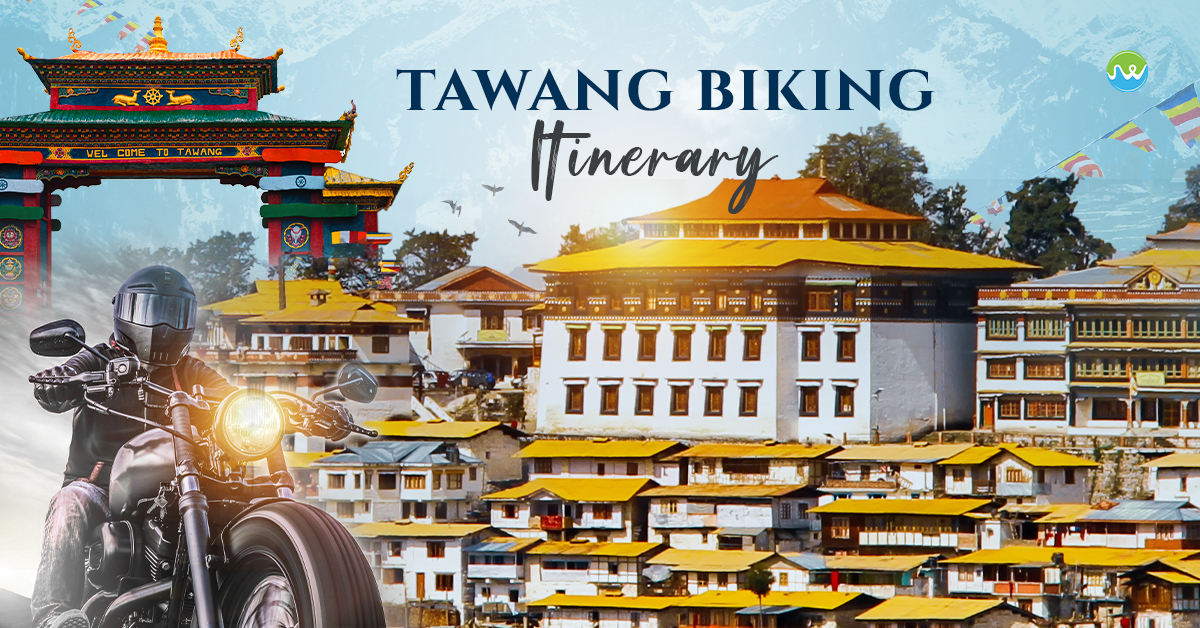
Published on 6 Oct
8 minutes read
Itinerary for Tawang Bike Trip | Best Biking Expeditions
8 minutes read
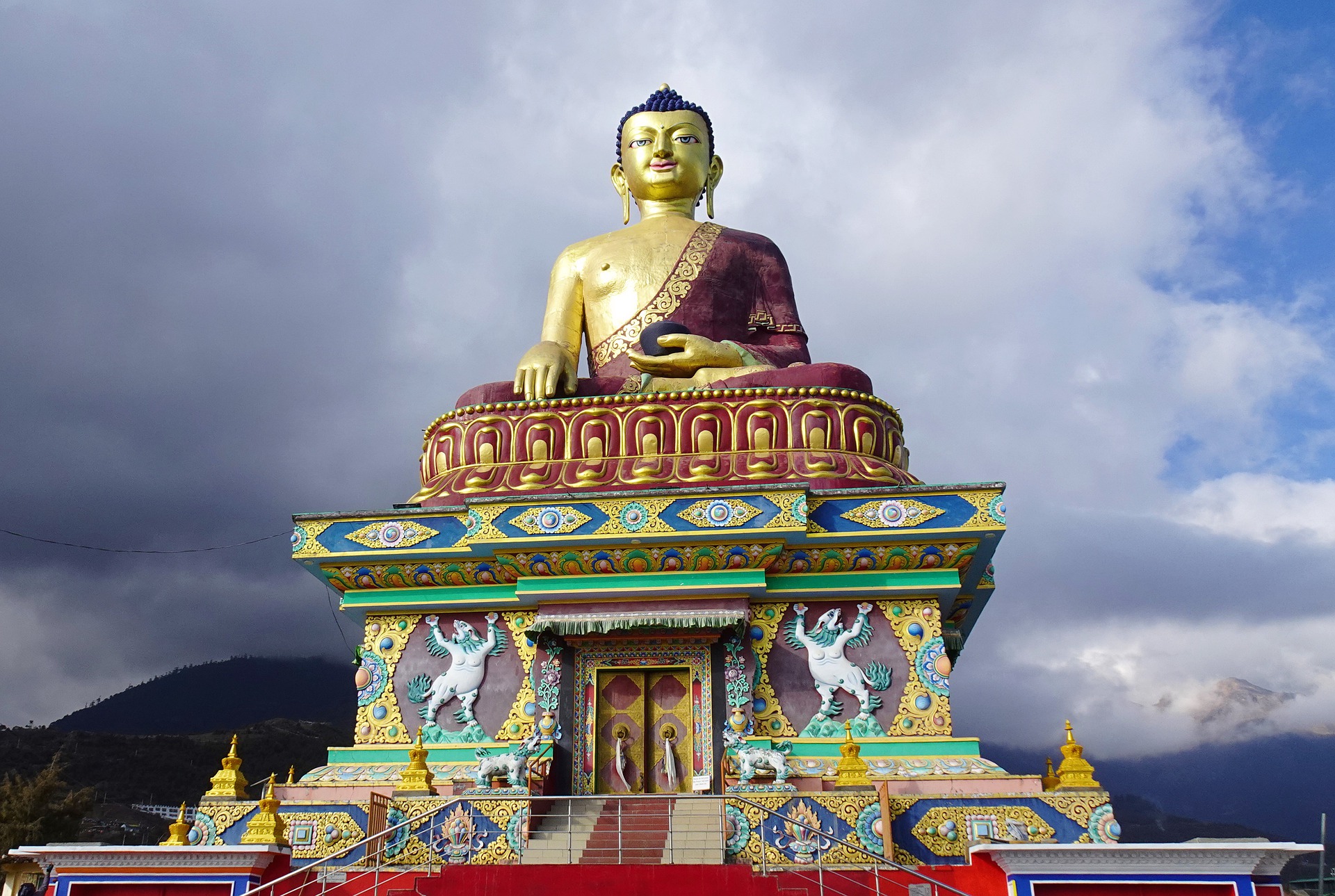
Published on 15 Sep
6 minutes read
Tawang FAQs – Frequently asked Questions about Tawang
6 minutes read
TRIPS
Related Trips





Bike and Backpacking Expedition to Tawang
Details
Inclusions
Safe Travel
Flexible Cancellation
Easy EMI
Certified Captains
24/7 Support
Overview
The Tawang bike expedition is the holy grail for bikers in India, the route being so raw and rugged even visitors from around the world come and have a go at it. It takes a certain level of madness and a thing for adventure to rev a bike and go through this route through the “land of dawn-lit mountains”.
We start our 7-night 8 days Bike expedition to Tawang from Guwahati. Guwahati is known as 'the city of Eastern Light' and it stands on the southern banks of the mighty river Brahmaputra. It is the capital of Assam and the gateway to the entire northeastern states. It is surrounded by hills and the Brahmaputra river, and rich and diverse flora and fauna enhance its natural scenic beauty.
Dirang is a village in Arunachal Pradesh which lies in the West Kameng district. It is situated on the banks of the Jia Bharali river at an altitude of 4900 ft. While in Dirang, you can take a walk through the peaceful village and take in the beautiful and serene environment.
Singstar Tso or the PTSO Lake is one of the highest altitude lakes in India at an altitude of 15,200ft. It is located on the way from Tawang to Bumla Pass. The Bum La Pass is located about 37 km away from Tawang, at the Indo-China border above 16,500 ft above sea level. The roads are mostly covered with snow. The road to Bum La is also a historical route; here in Bum La Pass one of the fiercest battles took place in the 1962 Sino-Indian War.
Next in our bike and backpacking expedition is Tawang, which lies at an elevation of 10,000ft. Tawang has an unmatched natural beauty that will leave you awestruck and of the iconic places to visit in Tawang is Tawang Monastery, which is the largest monastery in India.
Thembang Heritage Village is one of the unique villages which has been identified by UNESCO as a World heritage site village. Here you are going to have an experience of proper traditional Monpa Houses built of stones.
The ideal time to visit Arunachal Pradesh would be during summers i.e. April to June when the valley comes alive with wildflowers and greenery and the weather is pleasant. If you want to experience Arunachal Pradesh during winter, October to February is the best time to experience snow-covered landscapes and mountains.
Itinerary
1
Day
Guwahati Arrival | Drive to Kaziranga National Park (191 Kilometers, 4 hours)
2
Day
Kaziranga National Park to Bomdila (240 Kilometers, 6 Hours)
3
Day
Drive from Bomdila to Tawang (176 Kilometers, 5 Hours)
4
Day
Visit Bum La Pass | Drive Back to Tawang
5
Day
Tawang Local Excursion
6
Day
Drive from Tawang to Dirang (134 Kilometers, 4 Hours)
7
Day
Drive from Dirang to Guwahati (300 Kilometers, 8 Hours)
8
Day
Departure from Guwahati
Age Limit (Trip Wise)
Weekend
Getaways
18-38
Himalayan
Treks
18-48
Backpacking
Trips
18-40
Biking
Trips
18-45
Customized
Trips
No Limit
Pricing
Select Occupancy
+5% GST *
Batches
Tempo Traveler for local sightseeing Bike Rent with Fuel from Guwahati to Guwahati Riding Gears (Knee guard, Elbow guard, Helmet). Note: Due to comfort and safety reasons, we recommend you all to carry your own helmets for the ride. The helmets which we provide are of standard size so there can be some discrepancies regarding the sizes. Accommodation: 7 Night Hotel Accommodation on sharing basis as per itinerary. Meal Plan: MAPI Basis (Dinner+ Breakfast) The trip Lead will be present at all times during the tour. Group Jungle Safari in Kaziranga Medical and Mechanical Backup Back-up Vehicle Inner line permits Driver Allowances Parking charges First Aid Kits Oximeter Oxygen cylinder |
Cancellation Policy
Credit Note :
The Booking Amount will be credited to your JW Profile which can be accessed by logging in to the website through your Email ID. Credit Notes issued have no date of expiry and can be used entirely in any of your future trips.
GST :
The Booking Amount will be credited to your JW Profile which can be accessed by logging in to the website through your Email ID. Credit Notes issued have no date of expiry and can be used entirely in any of your future trips.
Payment Policy
Things To Pack
Rucksack:
You must pick a good quality backpack with a comfortable fit and straps that won’t give you shoulder pain. You can check out your nearest Decathlon store for a good trekking backpack.
You must pick a good quality backpack with a comfortable fit and straps that won’t give you shoulder pain. You can check out your nearest Decathlon store for a good trekking backpack.
Day Bag / Day Pack:
When you head towards the summit, you are required to carry only a few necessary items and for that, you need a day backpack as you will leave your bigger one on the campsite.
When you head towards the summit, you are required to carry only a few necessary items and for that, you need a day backpack as you will leave your bigger one on the campsite.
Hiking Shoes :
Durable footwear designed for rugged terrains.
Durable footwear designed for rugged terrains.
Floaters or Sandals:
Although the entire trek requires a good quality shoe, you still need to let your feet breathe to avoid chafing and blisters. When you are at the camp, a good pair of sandals and floaters will help you to move freely.
Although the entire trek requires a good quality shoe, you still need to let your feet breathe to avoid chafing and blisters. When you are at the camp, a good pair of sandals and floaters will help you to move freely.
Tees / Tshirts:
You must keep at least three pairs of quick dry tees so that you can wash them in between stops for proper hygiene.
You must keep at least three pairs of quick dry tees so that you can wash them in between stops for proper hygiene.
Poncho:
A poncho is an evolved form of a raincoat that provides coverage to your body as well as your bag and ensures total water protection from rain.
A poncho is an evolved form of a raincoat that provides coverage to your body as well as your bag and ensures total water protection from rain.
Quick Dry Towel:
A quick dry towel will help in maintaining proper hygiene. It must dry quickly because the wet fabric will only increase the chance of bacterial growth.
A quick dry towel will help in maintaining proper hygiene. It must dry quickly because the wet fabric will only increase the chance of bacterial growth.
Sanitizer:
Essential for maintaining cleanliness while trekking.
Essential for maintaining cleanliness while trekking.
Sun Cap / Hat:
A lightweight sun cap with side flaps is perfect to keep your head cool and avoid sunburns on a sunny day.
A lightweight sun cap with side flaps is perfect to keep your head cool and avoid sunburns on a sunny day.
Sunscreen SPF 40+:
To avoid sunburns and chafing, you need to put on sunscreen as well as cold cream.
To avoid sunburns and chafing, you need to put on sunscreen as well as cold cream.
Water Bottle (Re-usable):
Hydration is extremely important when it comes to trekking. Carrying a water bottle that you can refill with Himalayan water is a must.
Hydration is extremely important when it comes to trekking. Carrying a water bottle that you can refill with Himalayan water is a must.
Personal Toileteries:
A bag with all your essentials including napkins, toothpaste, sanitizers, paper soap, etc should be carried in a ziplock bag.
A bag with all your essentials including napkins, toothpaste, sanitizers, paper soap, etc should be carried in a ziplock bag.
Personal Medication / First Aid:
A few cuts and bruises are almost inevitable when you are on a trek so carrying a medical kit with bandages, Dettol, etc is necessary.
A few cuts and bruises are almost inevitable when you are on a trek so carrying a medical kit with bandages, Dettol, etc is necessary.
Sun Glasses / Reading Glasses:
Photochromatic glasses are specs that are designed to transform into anti-glare shades depending upon exposure to the sun. They are good when it comes to eye protection but one can also opt for clip-on glasses etc.
Photochromatic glasses are specs that are designed to transform into anti-glare shades depending upon exposure to the sun. They are good when it comes to eye protection but one can also opt for clip-on glasses etc.
Charger:
To keep your electronic devices powered during the trip.
To keep your electronic devices powered during the trip.
Power Bank:
Ensures your devices stay charged when there are no outlets.
Ensures your devices stay charged when there are no outlets.
Personal Documents & ID's:
Identification proofs like Aadhar Card, Drivers License.
Identification proofs like Aadhar Card, Drivers License.
Laundry Bag (Waterproof):
In case your clothes get wet or your garments don’t dry, you can carry them in polythene. However, make sure that all the plastic that you are carrying into the woods leaves with you. Don’t litter in the mountains.
In case your clothes get wet or your garments don’t dry, you can carry them in polythene. However, make sure that all the plastic that you are carrying into the woods leaves with you. Don’t litter in the mountains.
Track Pants:
A good pair of track pants made of polyester will let your skin breathe. They’re lightweight, dry easily, and comfortable to walk around in. You can easily avoid chafing and rashes by investing in a good pair of track pants.
A good pair of track pants made of polyester will let your skin breathe. They’re lightweight, dry easily, and comfortable to walk around in. You can easily avoid chafing and rashes by investing in a good pair of track pants.
Trekking Shoes:
A good trekking shoe is comfortable, provides ankle support, and has a good grip as well. They shouldn’t be chunky, instead, they should be lightweight and sturdy.
A good trekking shoe is comfortable, provides ankle support, and has a good grip as well. They shouldn’t be chunky, instead, they should be lightweight and sturdy.
Cotton Socks:
Cotton socks are extremely comfortable to move around in and are lightweight as well which is why you can always count on a good pair of cotton socks while trekking. However, keep in mind to change them and avoid wearing them when they are wet.
Cotton socks are extremely comfortable to move around in and are lightweight as well which is why you can always count on a good pair of cotton socks while trekking. However, keep in mind to change them and avoid wearing them when they are wet.
Woolen Socks:
A good pair of woolen socks, especially merino, are comfortable, limit odors and provide adequate insulation from the cold so you can wear them at night.
A good pair of woolen socks, especially merino, are comfortable, limit odors and provide adequate insulation from the cold so you can wear them at night.
Woolen Gloves:
Insulated gloves help in maintaining proper body heat in your hands and also provide a better grasp on trekking poles.
Insulated gloves help in maintaining proper body heat in your hands and also provide a better grasp on trekking poles.
Main Jacket:
It’s emphasized that you need to carry proper layers so you can avoid getting cold which is why you need to carry a heavy jacket that you can put on over your other clothes.
It’s emphasized that you need to carry proper layers so you can avoid getting cold which is why you need to carry a heavy jacket that you can put on over your other clothes.
Woolen Cap:
A woolen cap will help prevent cold when you ascend to high altitude. You can also cover your ears to avoid any pain and discomfort you might face in them when going at high altitudes.
A woolen cap will help prevent cold when you ascend to high altitude. You can also cover your ears to avoid any pain and discomfort you might face in them when going at high altitudes.
Hoodie:
A versatile layering option for various temperatures.
A versatile layering option for various temperatures.
Scarf / Balaclava:
Along with sun rays and chilly winds, you also get hit by dirt and grime during treks which is why it's important to carry a scarf or balaclava so you can cover your face when needed.
Along with sun rays and chilly winds, you also get hit by dirt and grime during treks which is why it's important to carry a scarf or balaclava so you can cover your face when needed.
Head Lamp:
You can’t rely on moonlight when you are in the mountains. A torch or even a headlamp with a fresh pair of batteries is always a good idea to bring along.
You can’t rely on moonlight when you are in the mountains. A torch or even a headlamp with a fresh pair of batteries is always a good idea to bring along.
Trekking Pole:
The trekking pole assists in more than one way. It saves energy while also providing stability and helps you to maintain proper balance.
The trekking pole assists in more than one way. It saves energy while also providing stability and helps you to maintain proper balance.
Camera:
This should be obvious. To make sure that you get to capture all the great moments from your trek. Make sure that you have enough storage and some extra batteries as well.
This should be obvious. To make sure that you get to capture all the great moments from your trek. Make sure that you have enough storage and some extra batteries as well.
Riding Gear:
If your trip involves biking or motorcycling.
If your trip involves biking or motorcycling.
Moisturiser & Cold Cream:
To avoid sunburns and chafing, you need to put on sunscreen as well as cold cream.
To avoid sunburns and chafing, you need to put on sunscreen as well as cold cream.
Lip Balm:
Your lips can become chapped due to the harsh cold winds so it's important to keep them moisturized.
Your lips can become chapped due to the harsh cold winds so it's important to keep them moisturized.
Sanitary Pads:
Essential for feminine hygiene.
Essential for feminine hygiene.
Insect Repellent:
Guards against pesky bugs and insects.
Guards against pesky bugs and insects.
Cash:
Emergency funds for unexpected situations.
Emergency funds for unexpected situations.
Thermals:
Thermal is a piece of garment that helps in keeping your body warm in cold temperatures. It is a necessary item that you need when going on a high-altitude trek.
Thermal is a piece of garment that helps in keeping your body warm in cold temperatures. It is a necessary item that you need when going on a high-altitude trek.
Snacks / Dryfruits / Energy Bar:
Provides quick energy on the go.
Provides quick energy on the go.
Positive Attitude:
The most important item for a successful trek or trip, keeping your spirits high and adaptable to the challenges of the journey.
The most important item for a successful trek or trip, keeping your spirits high and adaptable to the challenges of the journey.
FAQs
How far is Tawang from Guwahati?
The approximate distance between Tawang and Guwahati is 439 Kilometers. We cover the distance in the span of 3 days and traverse through many iconic landmarks on this bike and backpacking expedition to Tawang.
Can the bike and backpacking expedition to Tawang be customized?
Our bike and backpacking expedition to Tawang is a fixed departure tour which means that we follow a certain schedule and itinerary throughout the duration of the journey. Although we can make a few changes, granted that you inform your handler prior and be transparent about your requirements. If it seems feasible, then a few customizations can be made.
We also plan customized trips so if you have special requests for a trip, you can opt for getting your own itinerary tailored by your handler.
What is the booking process for the bike and backpacking expedition to Tawang?
You can book the trip from the website by clicking on the “Book Now” button. After that, you just have to fill in the necessary details like the batch dates, occupancy, and more. You can apply coupons or redeem your gift card to get discounts during the process.
You can either pay just the booking amount or the entire price depending on your convenience. We also have Pay-Later and EMI options.
Our payment gateway options include UPI, Netbanking, Debit Cards, EMI, Mobile Wallets, and more.
What is the best time to visit Tawang?
The best time to visit Tawang is the months of April to June when the valley comes alive with wildflowers and greenery. The weather is also pleasant. October to February is the best time to experience snow-covered landscapes and mountains in Tawang.
What is the best time to visit Tawang by bike?
The best time for a bike expedition to Tawang would either be from the months of March to June or from September to November.
What is the best time to plan a backpacking expedition to Tawang?
Depending on the kind of landscapes that you enjoy witnessing, the ideal time for a backpacking expedition to Tawang can vary. If you enjoy lush greenery, then the best time to visit Tawang is the months of April to June when the valley comes alive with wildflowers and greenery. The weather is also pleasant. If you’re a snow fanatic, then the months of October to February are the best time to experience snow-covered landscapes and mountains in Tawang.
What are the best places to visit in Tawang?
Tawang is in the Northeastern state of Arunachal Pradesh, located in proximity to the India- Chinese Border. It lies at an elevation of 10,000 ft. and is located 448 km northwest of the state capital Itanagar. It is famous for being an abode to the largest monastery in India which is also 4000 years old. It is a small town nestled in the eastern Himalayan ranges which offer scenic vistas and an abundance of peace. Tawang is a hidden gem of the northeast. Apart from its monastery, it also offers bikers an opportunity to ride on some iconic motorable passes like the BumLa pass, Sela Pass, etc. Some of the best places to visit in Tawang that we have included in our bike and backpacking expedition to Tawang
Sela Pass: At an altitude of 13,700 ft, it is a high-altitude mountain pass that connects Tawang to the rest of the country.
Tawang Monastery: Also known as Gaden Namgyal Lhatse in Tibetan. It is the largest monastery in India.
Jaswant Garh War Memorial: A war memorial dedicated to the soldier Jaswant Singh Rawat who bravely fought against the Chinese Army.
BumLa Pass: At an altitude of 15,200 ft, it is one of the most off-beat passes in the world which remains snowbound for almost the entire year.
Madhuri Lake: A popular tourist attraction named after the Bollywood actress Madhuri Dixit.
Urgelling Monastery: It is one of the oldest Gompas in Tawang and is also the birthplace of the 6th Dalai Lama.
Giant Buddha Statue: A 30ft tall statue of Budhha that overlooks the upper regions of Tawang from an elevation of 10,000ft.
Jung Falls: A sparkling waterfall that rose to prominence after being featured in the movie Koyla.
What are some things to pack for the Tawang bike and backpacking expedition?
Depending on the destination that you are traveling to, we share an extensive list of things you need to carry on your trips. Some of the essentials that you must carry are your documents (ID proof, Drivers license, etc), a medical kit with all your personal medications and medicines for nausea, headache, etc as well.
How to plan an 8-Day backpacking expedition to Tawang?
You don’t have to because we’ve done it for you. Our bike and backpacking expedition to Tawang is all-inclusive, lasts 8 days, and covers multiple destinations along with offering travelers an opportunity to indulge in adventure activities. The additional perk is that you’d find people who you’ll build connections with, share stories with, and experience the true joy of traveling.
Is this Backpacking expedition to Tawang safe for a female solo traveler?
As a community that has always encouraged female travelers to explore more and has always strived to provide a safe platform for them, we can proudly say that our trips and treks are not only safe but are also curated by keeping in mind the ratio of female travelers that travel with us on an average, which makes the entire experience smooth and more enjoyable.
We have a 2:3 female-to-male ratio when it comes to travelers and often the ratio can also be 3:2.
We’ve female trip captains who have been leading groups for years skilfully and are always there to look out for other female travelers.
A female traveler, solo or otherwise has nothing to worry about.
What can we expect from this bike and backpacking expedition to Tawang?
Apart from our usual services, you can expect to meet like-minded travelers who are as passionate about traveling as you are. A Tawang backpacking expedition where you get to explore multiple beautiful destinations and create memories with strangers who end up becoming family. A trip where you don’t have to worry about meals or accommodations because you’re too busy having fun. You can be a solo traveler or come with a bunch of friends, you’re bound to have fun.
What services are included in this itinerary of the bike and backpacking expedition to Tawang?
In our fixed departure tour to Tawang, we provide the best-in-class accommodations, transportation as well as surface transfer wherever possible, meals as per the itinerary, and activities as per the itinerary. Along with that, an experienced trip leader equipped with a medical kit stays with the group at all times. All kinds of permits, toll taxes, parking charges, and driver allowances are also included.
How many days are enough for a bike and backpacking expedition to Tawang?
A full-fledged backpacking expedition to Tawang requires at least 8 days so that you can visit all the iconic landmarks without any hassle. An 8-day itinerary would allow you to add Guwahati to your trip which would be an experience in itself as you can visit the Kaziranga National Park and go on a jungle safari tour as well.
Where can we expect snowfall during this bike and backpacking expedition to Tawang?
Tawang embraces the coldness of winters in the months of November and remains like that till March. It receives heavy snowfall in December and January which is when it also becomes inaccessible as the routes and passes all get covered in thick blankets of snow. Early snowshowers can be experienced near Sela Pass, Dirang, and other regions in November.
Which mobile networks work in Tawang?
Despite its offbeat nature, There is a proper network in Tawang. BSNL, Airtel, Jio, and Vodafone postpaid connections work while BSNL and Airtel are the strongest.
What kind of food should we expect in Tawang?
There is a wide range of options starting from Tibetan, and Chinese to Local cuisine. However, the local cuisine mostly has meat in it which makes it a bit difficult for vegetarians and vegans but Tawang has great restaurants and dhabas which serve an array of food. The best restaurants in Tawang include
- The Dragon
- Orange Restaurant & Lounge Bar
- GTK Kitchen
Is a permit required to visit Tawang?
Yes, tourists need an Inner Line Permit (ILP) to enter Tawang.
Tourists can apply for the permit online on the Arunachal Pradesh Tourism website which costs around Rs. 150 to Rs. 200 and takes around 5 to 8 working days. The alternate option is to directly get it through Guwahati Airport from the Arunachal Pradesh tourism office. The costs can be verified on the office itself.
Similar Packages
blogs
Our Blogs

Published on 21 Oct
9 minutes read
Tawang Travel Guide | Things To Keep In Mind Before Heading To Tawang
9 minutes read

Published on 6 Oct
8 minutes read
Itinerary for Tawang Bike Trip | Best Biking Expeditions
8 minutes read

Published on 15 Sep
6 minutes read
Tawang FAQs – Frequently asked Questions about Tawang
6 minutes read
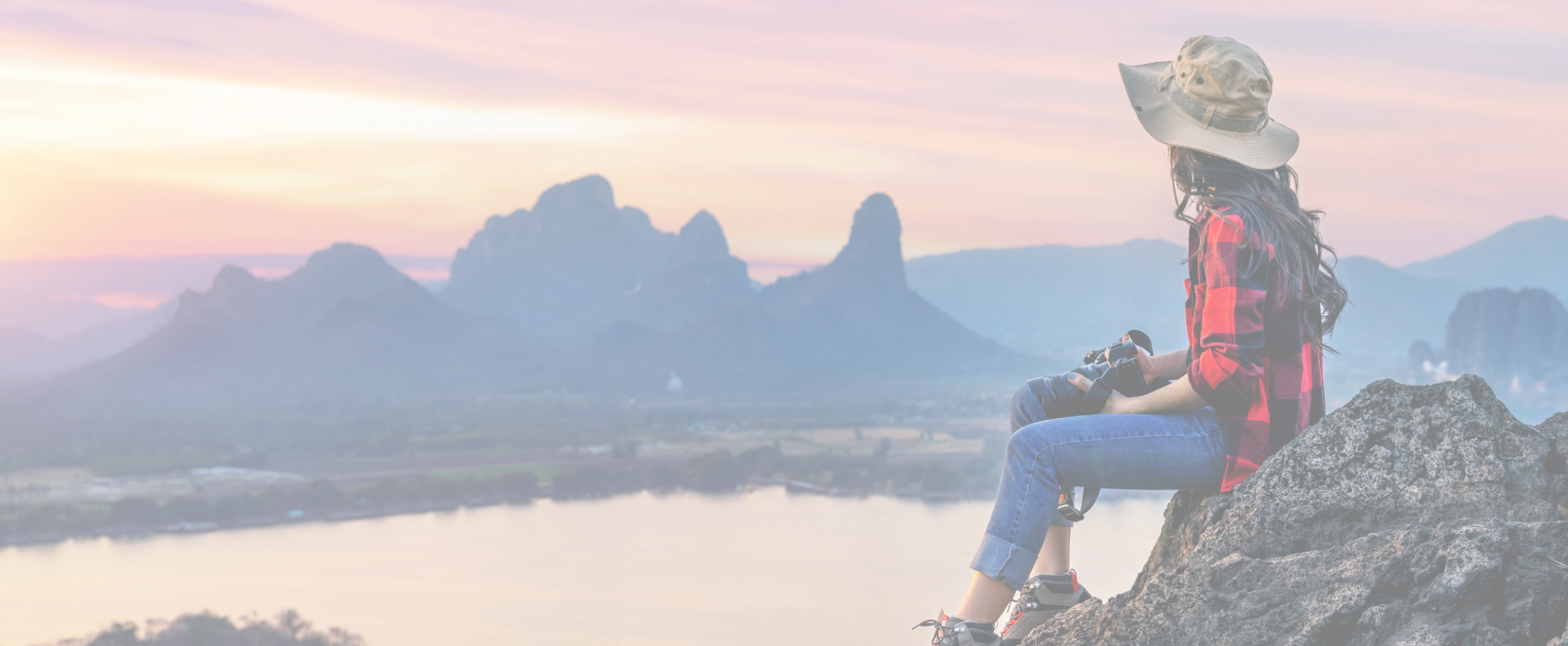
Newsletter
Sign up now!
Be the first one to know all about the Exciting Offers, Travel Updates and more.
Contact Us
34/1, Fourth Floor, Tower B,
The Corenthum, Block A, Sector 62, Noida, Uttar Pradesh 201301
© 2015-2024 JustWravel Pvt. Ltd.
Starts From

